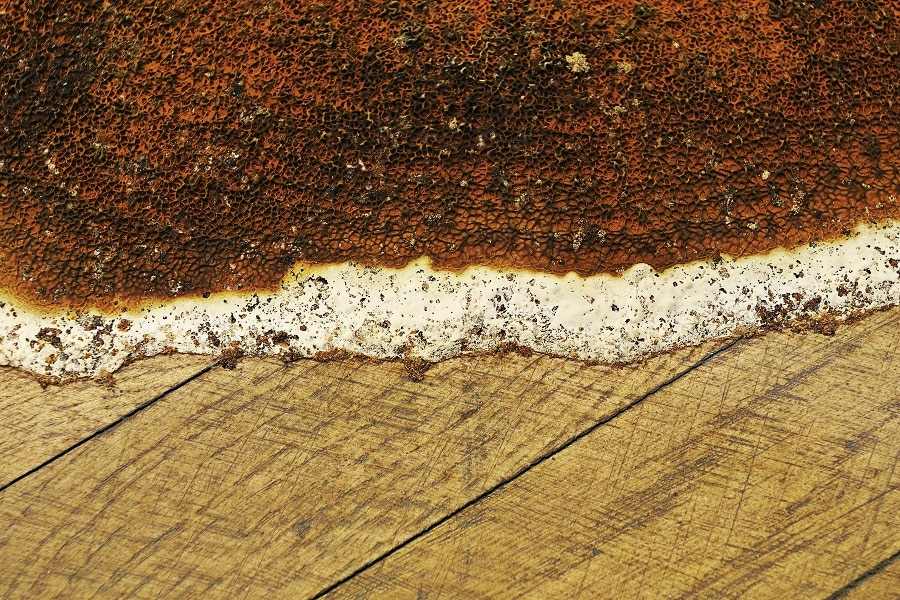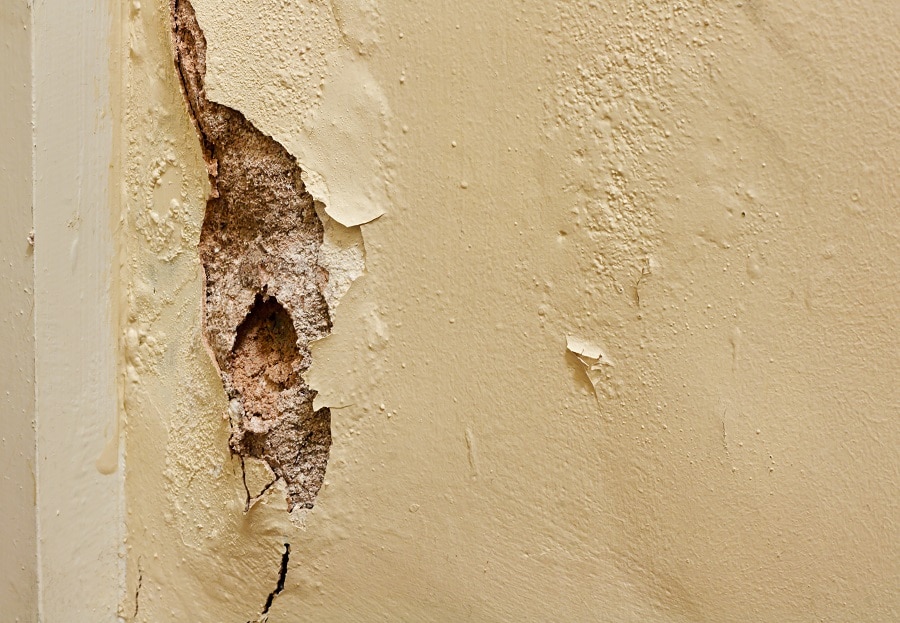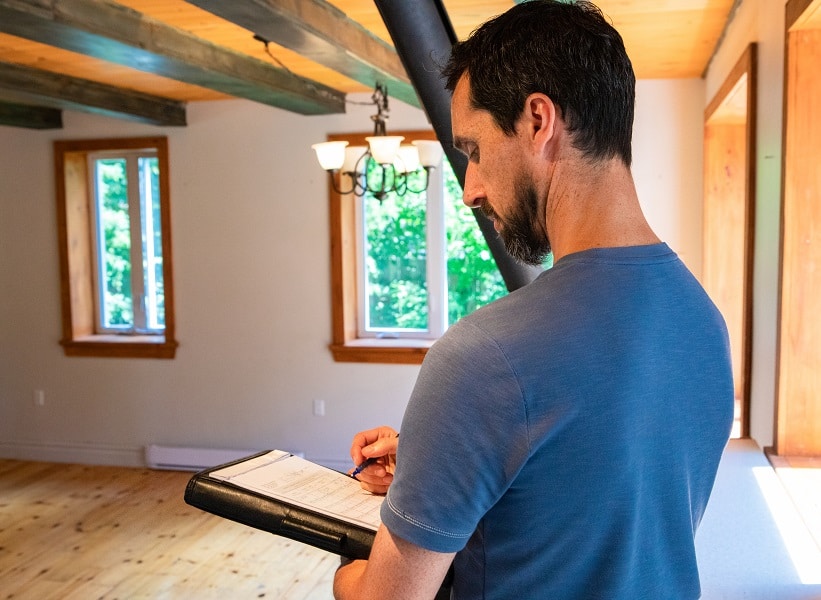What is dry rot?
Wood-decay fungus is often called dry rot. Wood is broken down by Sporocarp (fungi), as the Mycelium consumes the wood, dry rot occurs resulting in fine dust particles, decomposition of the wood and dry rot bloom. Dry rot fungal spores need an adequate place to land and begin their colonies before they disperse through the underlying wood. Many of these spores can be found in soil and old wood already affected by dry rot.
This means that dry rot can re-infect even treated wood if it is damp enough (i.e., below 15% relative humidity). While Dry Rot can be harder to spot, it is potentially more damaging than wet rot. It often happens where you don’t look. It could be under the plaster, beneath your floorboards, or even in your loft. As a homeowner, it’s a good idea to understand the telltale signs of dry rot so you can act fast.
Our Guarantee
- upto 30 year guarantee
- customer focused team
- 20 years combined experience
- portfolio of satified customers
- attention to detail
- Construction line accreditation
- public liability insurance
- CHAS accreditation
What is the difference between dry rot and wet rot?
Dry rot and wet rot are different because they have different species. Unlike dry rot which can spread in minimal amounts of water, wet rot is dependent on significant moisture to spread. Wet rot spreads quicker, which means it can consume more of your property much faster than dry rot. This is because the use of oils within timbers effectively fills the capillaries that Dry Rot requires for infestation. Dry rot fungus can be “silent”, but it is very active and spreads incredibly quickly once it has taken hold in a property. Wet rot fungus, on the other hand, occurs more often but is less serious, usually, the decay is confined to areas where the timber becomes and remains wet.
Call Our Sussex Damp Experts team now for quote, consultation and advice:
Call on 01273 257 765.
What are the causes of dry rot?
A lot of fungi species cause dry rot. Serpula Lacrymans is the most popular in the Seaford. If it’s not handled fast enough, it’s going to spread over your house, brick and mortar, and even plaster. This would damage the integrity of your structural wood, and thus the structural integrity of your whole residence. Dry rot attacks when you have an unhealthy amount of moisture in your timber. The fungus will use the moisture and nutrients to grow and reproduce. The word “dry rot” is used to differentiate between “wet wood” and “dry wood rot.”
Wet timber fodder on a dry rot. In order to develop spore-bearing structures, the fungal spores need over 30% dampness to generate hyphae after this, however these hyphae merely need 20% dampness to last. These threads can turn into fungal bodies called mycelia, which can also extend to find more wood in stone and brick. The fungi will remove hemicellulose, cellulose, and H2O, leaving behind a weak structure of the original wood. You will need a specialist survey to distinguish whether your decaying timber is being caused by dry rot or by a different fungus. This is important as the remedies for these damages can vary based on the actual cause.

The dangers of dry rot in Seaford
Dry Rot Effect on your Property
The greatest issue with dry rot is that it can easily attack the structural integrity of your house. As Dry Rot breaks down your properties structural timber, it will eventually cause it to crumble. Extreme conditions may cause your home or appliances to fail. Dry rot is actually a fungal infestation that penetrates through the mortar and spreads across the brick or stone. Hence, regular checks are essential.
Dry rot is a ravaging condition that affects your home and must be addressed immediately. When you know a dry rot problem is imminent, call in the experts at Dry Rot Experts and Rescue. If you’re worried about dry rot, an inspection from our expert team can help you avoid major problems in the future.
Dry Rot Effect on Your personal health
Actually it is not the fungus that causes the damage. Dry rot is a fungus that can be harmful to your health if you allow it to occur. This is particularly hazardous for the adults, children and people with respiratory conditions.
What are the Warning Signs of Dry Rot?
The earlier you discover dry rot, the less time and money you’ll need to spend treating it and initiating remedial works. If you see any of the signs and symptoms listed below, a full assessment is recommended.
-
The beginning of the dry rot cycle
Fungi spores may travel through air via wind in order to infect a new host. The insect cuts small holes into the wood and eats the sap that comes out. They can germinate and produce hyphae as they feed on it, if the wood provides them sufficient nutrients to do so. The hyphae grow and join up into a lot of tangled spaghetti-like threads called mycelium. Mycelium can be light grey to pure white. They can even work their way into your property’s foundations and spread into the mortar, bricks and plaster to find new timber.
-
Your timber is damaged.
If the wood is infected by dry rot, it can become flexible and dry. This could lead to the collapse of your timber. You will also notice the dry rot darkening the color of your wood. Specifically, dry rot can cause something called cuboidal cracking. Cuboidal cracking occurs when the wood breaks into cubes that are about 50 mm in width. The distinctive symptom of white rot in wood is a creamy colour to the wood due to a white fungal growth called “hyphae”. Hyphae can look like cobwebs and is a common symptom of dry rot.
-
Your timber will smell.
If you smell a strong, fungal, dank and musty odour in your timber, it is likely to be affected by dry rot. This can happen even though you can’t see an epidemic of dry rot. The smell of mold, however, is not a definite indicator that there are no signs of dry rot.
-
Your timber will have fungus bodies on it.
This is the final stage of dry rot and the most noticeable. Mushrooms such as fruiting bodies might start to join themselves with your timber. As the timber dries out, the fungus inside can no longer feed off the timber, in order to survive, it pumps its spores out to infect more wood.
-
Your timber will have spore dust.
Spores of the dry rot fungus don’t just occur in woods already affected by dry rot. Yet, if splotches of rusty coloured dust accompany dry rot spores, it can be indicative of dry rot. Fertile bodies supply this spore dust in the final cycle of dry rot.
Dry Rot Treatment in Seaford

A Dry Rot infestation can only occur when moisture levels are above 20%. The first safeguard to remove the presence of fungi is the monitoring of your living room or property’s moisture levels. You can now control the moisture levels. We advise you to commission an expert in order to treat dry rot.
Any contaminated timber removal and any repair work is handled by Souther Damp Proofing. Removing affected timber needs to be actioned by a professional. The exact treatment is known by a professional damp proofing expert. Either injected into the timber, or cover the timber surface can timber be treated. There are also several preventative treatment options available. These chemicals require specific concentrations and can have unpleasant side effects if inhaled or injected accidentally.
Your timber may require Boron roads injection from a professional. Boron is a harmful item, therefore the protective clothing is worn by damp proofing experts. Our damp proofing team will find and fix your leaks and resolve any dry rot damage. If left untreated, dry rot can lead to the structural failure of a wooden structure. If dry rot is not treated right away, it will spread throughout your property and cause real damage. Our Sussex Damp Experts team will work with you to implement a suitable treatment that addresses your problem effectively and efficiently. Please don’t wait until it’s too late. Call 01273 257 765 for today’s free survey and successful care if you suspect you have a problem with dry rot.
How can you prevent dry rot damage in Seaford?
Preventing dry rot is the first step of treatment. A rot infestation is caused by water penetrating the timber and it’s inability to dry out, either due to poor ventilation or air-tight construction. Any activities that prohibit them from evolving are present here: Make sure there are no leaks in your house. Provide proper, sufficient ventilation.
Ventilate correctly and envelop the attic. Properly ventilate crawl spaces. Keep everything dry down there with watertight crawl space floors. Check all wall and roof flashing to ensure water is being directed properly. Stay out of sinks and drains. It’s a very good idea to check your pipes and heating system for leaks when using a wet system The best way to reduce the chance of dry rot is to minimize moisture levels, considering the moist conditions needed for dry rot fungus in feeding and germinating. If you have a leak, plugging the leak can help reduce further damage to the house.
Speak to a Dry Rot specialist in Seaford
We are equipped to fix any wet or dry red issues that concern your property or your house. We’ll do a full steam survey of the property and give you a free estimation before we start any work. Over the years, we have helped thousands of Seaford homeowners with their damp problems, and we can help you too. You can get in touch with us for a free consultation and quote on 01273 257 765. A trained professional can examine the area to identify the source of your water damage, and recommend a solution. This encourages us to provide unbiased guidance about the sort of care you require.

All of our surveyors are qualified and can identify everything, including the solution, from Dry Rot to moisture input, and provide you with an affordable price for any remedial work. Dry rot is caused by moisture getting into the wood, it is important to contact us right away because dry rot can spread quickly. Sussex Damp Experts will be able to help you no matter what the nature of your damp issue is, email or call us on 01273 257 765
FAQ
Should dry rot be restored or replaced?
A certain level of dry rot can be repaired, but whether the damaged areas provide the house with structural stability, such as beams and joints, or even flooring, it is not recommended. Replace the wood in such a situation instead of repairing it. Whether you restore or rebuild the wood, it is better if you avoided the conditions that caused the rot to flourish in the first place or risked it coming back. Your roof leaks, broken gutters, or downspouts, plumbing leaks or insufficient ventilation should be inspected when considering a roof moisture accumulation You may consult a specialist to find and repair the problem.
Will you be able to treat my Dry Rot problem effectively?
With our expertly trained surveyors and specialists, a dry rot problem can be treated, rectified, and your timber can be protected for the future.
How do I discover how far Dry Rot has spread?
If you have traced the dry rot fungus quickly or not, a professional will identify the source of the problem. They will be able to trace the fungus in the different masonry and plaster from which it has spread.
How much can dry rot widen?
Dry rot spores can spread in anyplace with the right environmental settings. The reason is that they are carried in the atmosphere. If your timber has a moisture content of around 20%, and if it is in the open air, these conditions are attractive to dry rot fungus. This suggests that fungus groups can disperse to multiple materials. If dry rot is spreading across masonry and plaster, and if it reaches more timber to feed off where the timber is moist. It can widen further. Dry rot fungus needs five things to survive: the right temperature, drive rot spores, moisture, oxygen, and the food source. In any home in Brighton most of this is present.
Will dry rot stretch?
What should I do to control dry rot?
First identify the reason for your timber moist before solving it. A different treatment shall be given if the reason for your timber moisture is outside.
What are the effects of living dry rot unchecked?
Dry rot is the most insidious form of moisture that can infest property and cause permanent damage to the building if left untreated. Sometimes, once the harm is already done due to the places in which the problem is likely to be the presence of dry rot does not come to light.
Is dry rot stringent?
Dry rot can be particularly common in wooden properties, so it is essential that early signs of dry rot are identified before the damage becomes too severe.
How am I meant to know if I have dry rot?
A timber survey will assess how your timber is affected by being exposed to moisture. Later on, fruiting bodies and mycelium will be noticeable in the drive rot life-cycle.
Where can dry rot grow?
Dry rot attacks and rots timber that’s been in contact with water for a long period of time. Although it can often be mistaken for other problems in its early stages, it is important to seek advice. In every structure, both old and new, dry rot can grow. The reason being that it is caused by moisture and wetness that happen anyplace. Dry rot can be caused by leaks or weather, meaning the type of property does not affect it.




